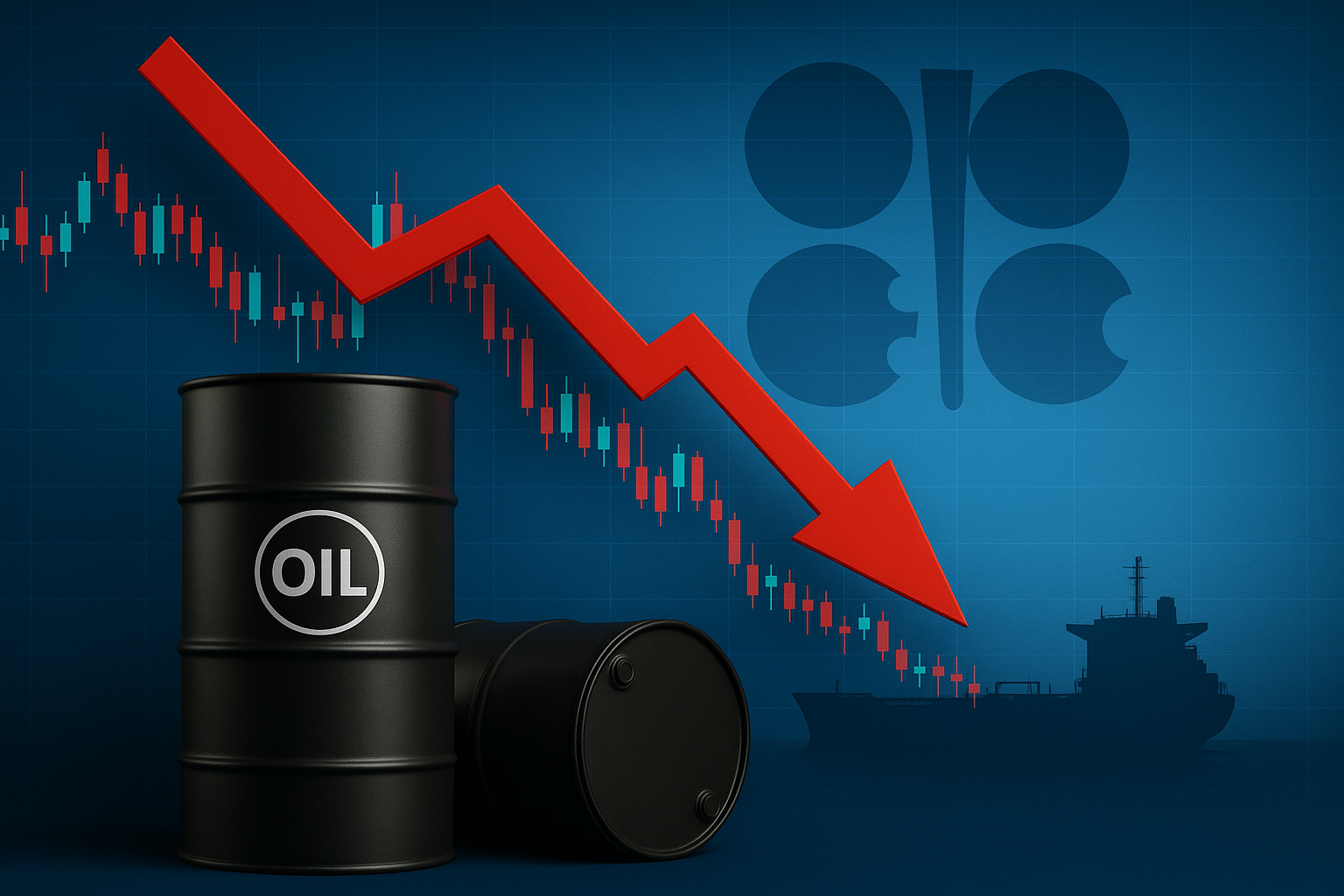Oil Slides Sharply as Mideast Ceasefire Hopes Dampen Risk Premiums
By Tredu.com • 10/10/2025
Tredu

Oil Slides Sharply as Ceasefire Hopes Erode Premiums
Oil extended its sharp decline, as cautious optimism over a possible Middle East ceasefire trimmed the geopolitical risk premium and heightened concerns over global oversupply. Benchmark crude fell further after recent gains, with traders refocusing on fundamentals rather than premium pricing.
Market Drivers: From Geopolitics to Supply Stress
De-Risking on Ceasefire Aspirations
Markets interpreted recent developments toward a ceasefire in Gaza and tentative Israel-Hamas progress as signals that the region’s supply risks may abate. This dampened the so-called “security premium” built into oil valuations.
OPEC+ Supply Moves Stir Anxiety
Adding to the pressure, OPEC+ signaled expansions: a 137,000 barrels/day output increase scheduled for November intensifies worries of an already well-supplied global market.
Demand Doubts & Economic Slowdown Risk
Beyond the supply side, macro concerns loom: weakening global growth, inflationary pressures, and energy demand softness in large economies may further undercut crude support levels.
Price Behavior & Technical Watchpoints
Oil benchmark prices have tumbled, marking their largest weekly losses in some sessions. West Texas Intermediate (WTI) dipped beneath $62 a barrel, while Brent gravitated around $65 per barrel.
From a technical standpoint, key levels to watch include the next support zones near $58–$60 for WTI, and $62–$64 for Brent. A break below could trigger accelerated downside. Resistance now lies near recent highs around $68–$70, assuming sentiment recovers.
Risks & Bear Case Considerations
- Ceasefire breakdown or flare-up: If hostilities reignite, geopolitical risk premiums could snap back faster than anticipated.
- OPEC+ noncompliance or surprise cuts: Unexpected production discipline or surprise policy shifts could re-tighten markets.
- Demand shock from economic malaise: A sharper economic slowdown or energy conservation push could hollow out demand forecasts.
- Logistics & inventories volatility: Inventory builds in OECD regions or transport/backlog complications may exacerbate downside risk.
Tactical Investor Playbook
- Hedged short exposure: Use options or hedges to benefit from further downside while protecting against a bounce.
- Scale-in approach: Entry on strength (i.e. temporary rebounds) may reduce timing risk in a volatile market.
- Watch OPEC+ meetings & headlines: The next group meeting could make or break the tone.
- Monitor energy earnings / capital spending: Upstream and integrated energy firms will give signals on capex pivots or caution.
- Stay flexible on time horizon: The oil market is reactive to both near-term news and medium-term supply/demand shifts.
Final Word
Oil slides sharply, driven by easing Mideast tensions, supply overhang, and demand uncertainty. While a ceasefire outlook has reduced the “security premium,” OPEC+ supply signals and economic headwinds leave markets exposed. The commodity now stands at a crossroads, will renewed conflict or policy shifts reverse the slide, or will the downward spiral gather force?
At its core: crude prices are under pressure as geopolitical relief collides with fundamental oversupply.

How to Trade Like a Pro
Unlock the secrets of professional trading with our comprehensive guide. Discover proven strategies, risk management techniques, and market insights that will help you navigate the financial markets confidently and successfully.


